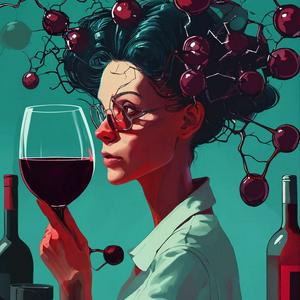Champagne & Cava: Two Ways to Catch a Bubble (or proof that joy can be engineered - one tiny bubble at a time)
Send me your thoughts at
[email protected] Europe, bubbles tell stories. In this episode of The Wine Lab, we explore two sparkling legends - Champagne and Cava - both born from the same meticulous process yet shaped by different lands, grapes, and histories.We’ll uncover how the traditional method transforms still wine into a storm of fine bubbles, why the same Brut label can taste drier in Champagne than in Cava, and how yeast, sugar, and time create that signature creamy texture and brioche aroma.From royal coronations in Reims to sunny Catalan cellars, discover the shared science and unique soul of the world’s most beloved sparkling wines - proof that joy, sometimes, can be engineered.GlossaryMéthode Traditionnelle (Traditional Method): The classic process of making sparkling wine, involving a second fermentation inside the bottle that traps carbon dioxide and creates natural bubbles.Tirage: A mixture of sugar and yeast added to the base wine to start secondary fermentation.Lees / Autolysis: Dead yeast cells that settle after fermentation. Over time, they break down, releasing flavor compounds that add creaminess and notes of bread, nuts, and brioche.Riddling (Remuage): Gradual turning of bottles to collect sediment in the neck before removal.Disgorgement (Dégorgement): Freezing and ejecting the sediment plug from the bottle after aging.Dosage: The final addition of wine and sugar after disgorgement to balance acidity and determine sweetness level.Residual Sugar (RS): The amount of natural grape sugar remaining in wine after fermentation, measured in grams per liter (g/L).Brut / Extra Brut / Brut Nature: Dryness levels in sparkling wine. Brut Nature is bone dry (0–3 g/L sugar), Extra Brut slightly less dry (up to 6 g/L), and Brut the most common (up to 12 g/L).Gyropalette: A mechanized riddling machine invented in Spain, now used worldwide to automate the process.Champagne Grapes: Primarily Chardonnay, Pinot Noir, and Pinot Meunier.Chardonnay brings elegance, freshness, and citrus-mineral notes.Pinot Noir adds body, structure, and red-fruit depth.Pinot Meunier contributes softness, fruitiness, and approachability.Cava Grapes: Traditionally Macabeu (Viura), Xarel·lo, and Parellada, sometimes joined by Chardonnay, Pinot Noir, or Trepat for rosé styles.Macabeu offers floral and apple notes with a gentle profile.Xarel·lo provides structure, acidity, and subtle spice.Parellada adds lift, freshness, and delicate citrus. Together, they express the Mediterranean warmth and brightness that define Cava.Support the showFor more detailed wine science checkout my YouTube channel here: https://www.youtube.com/@Enology_channel


